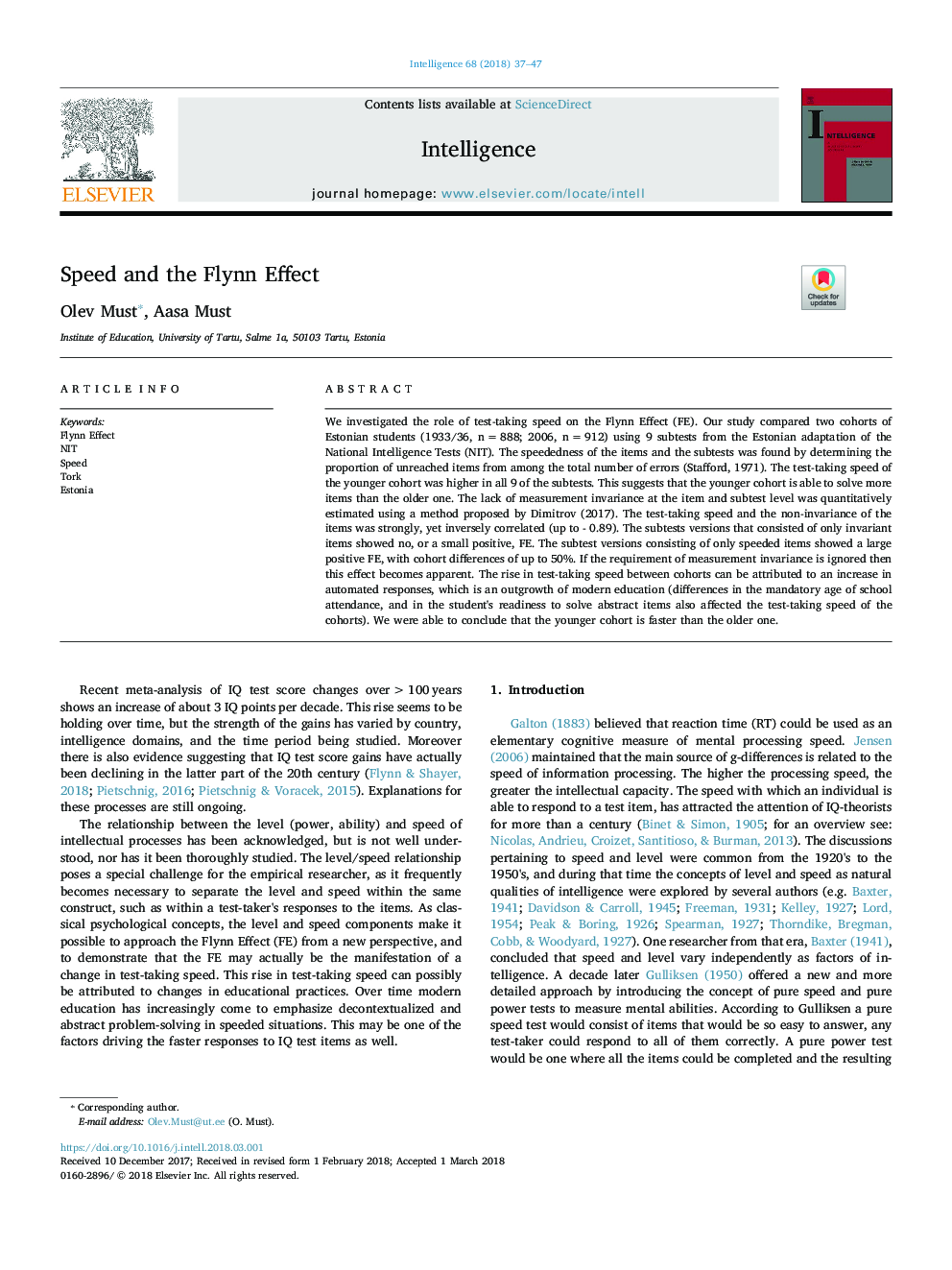| کد مقاله | کد نشریه | سال انتشار | مقاله انگلیسی | نسخه تمام متن |
|---|---|---|---|---|
| 7292800 | 1474248 | 2018 | 11 صفحه PDF | دانلود رایگان |
عنوان انگلیسی مقاله ISI
Speed and the Flynn Effect
ترجمه فارسی عنوان
سرعت و اثر فلین
دانلود مقاله + سفارش ترجمه
دانلود مقاله ISI انگلیسی
رایگان برای ایرانیان
موضوعات مرتبط
علوم انسانی و اجتماعی
روانشناسی
روانشناسی تجربی و شناختی
چکیده انگلیسی
We investigated the role of test-taking speed on the Flynn Effect (FE). Our study compared two cohorts of Estonian students (1933/36, nâ¯=â¯888; 2006, nâ¯=â¯912) using 9 subtests from the Estonian adaptation of the National Intelligence Tests (NIT). The speededness of the items and the subtests was found by determining the proportion of unreached items from among the total number of errors (Stafford, 1971). The test-taking speed of the younger cohort was higher in all 9 of the subtests. This suggests that the younger cohort is able to solve more items than the older one. The lack of measurement invariance at the item and subtest level was quantitatively estimated using a method proposed by Dimitrov (2017). The test-taking speed and the non-invariance of the items was strongly, yet inversely correlated (up to - 0.89). The subtests versions that consisted of only invariant items showed no, or a small positive, FE. The subtest versions consisting of only speeded items showed a large positive FE, with cohort differences of up to 50%. If the requirement of measurement invariance is ignored then this effect becomes apparent. The rise in test-taking speed between cohorts can be attributed to an increase in automated responses, which is an outgrowth of modern education (differences in the mandatory age of school attendance, and in the student's readiness to solve abstract items also affected the test-taking speed of the cohorts). We were able to conclude that the younger cohort is faster than the older one.
ناشر
Database: Elsevier - ScienceDirect (ساینس دایرکت)
Journal: Intelligence - Volume 68, MayâJune 2018, Pages 37-47
Journal: Intelligence - Volume 68, MayâJune 2018, Pages 37-47
نویسندگان
Olev Must, Aasa Must,
